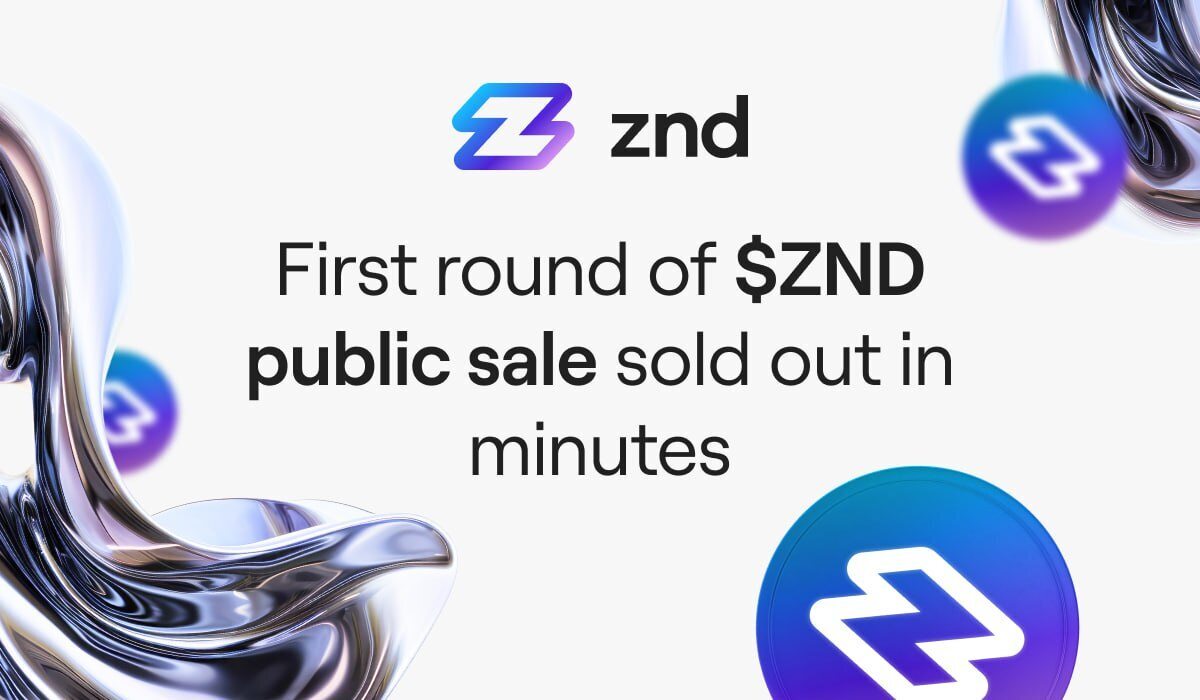Polygon Blockchain Facilitates Italy’s First Digital Bond Transaction
Italy’s state-owned development bank, Cassa Depositi e Prestiti SpA (CDP), and Intesa Sanpaolo have completed a landmark digital bond issuance using blockchain technology. Simultaneously, Polygon is preparing to replace its MATIC token with POL tokens as part of its Polygon 2.0 upgrade, aimed at expanding the utility of its native token. Meanwhile, Polygon Labs has released Plonky3, the latest version of its zero-knowledge proving system, designed to enhance the flexibility and efficiency of blockchain transactions.
Italy Pioneers Digital Bond Issuance with Blockchain Technology
Italy's state-owned development bank, Cassa Depositi e Prestiti SpA (CDP), and Intesa Sanpaolo, the largest lender in the country with assets exceeding $1 trillion, have successfully completed a digital bond issuance utilizing blockchain technology. This landmark transaction, executed on Thursday, marks the first under Italy's new digital asset regulations and signifies a significant step forward in the integration of blockchain within traditional financial systems.
The €25 million bond, with a maturity of four months, was issued by CDP on the Ethereum-based Polygon (MATIC) network. Intesa Sanpaolo acted as the underwriter and sole investor for this issuance. Notably, the cash flow for this transaction was settled in euros on the same day (T+0), facilitated by the Bank of Italy's ”TIPS Hash Link” tool. This innovative tool ensures interoperability between blockchain platforms and traditional payment systems, enhancing the efficiency and security of financial transactions.
This issuance was the first digital bond conducted under Italy's ”FinTech” decree-law, which provides a regulatory framework for the issuance and circulation of digital versions of financial instruments. The decree is part of Italy's broader strategy to embrace digital transformation and foster innovation within its financial sector. The successful issuance of this digital bond is also aligned with the European Central Bank's (ECB) initiative to explore methods for wholesale fiat money settlement on blockchains.
The Growing Trend of Tokenization
The move by CDP and Intesa Sanpaolo reflects a broader trend among global banks and asset managers to explore the tokenization of real-world assets. Tokenization involves converting traditional financial instruments, such as bonds, credit, and funds, into digital tokens on a blockchain. This approach offers numerous operational benefits, including faster and more transparent transaction settlements, reduced costs, and increased efficiency.
Niccolò Bardoscia, head of digital assets trading and investments at Intesa Sanpaolo, highlighted the transformative potential of this technology. ”This transaction demonstrates how public blockchains are a powerful technology for financial institutions, making transactions faster and safer,” Bardoscia stated in a LinkedIn post. He further emphasized that ”tokenization is establishing a new standard for efficiency and automation in financial markets, and I believe this technological change will impact not only bonds but every asset class over the coming years.”
The successful issuance of the digital bond by CDP and Intesa Sanpaolo is a significant milestone that signals the potential of blockchain technology to revolutionize financial markets. By leveraging the Ethereum-based Polygon network and ensuring seamless integration with traditional payment rails through the TIPS Hash Link tool, this transaction showcases the practical benefits of blockchain in terms of speed, security, and efficiency.
Furthermore, this development is expected to encourage other financial institutions in Italy and beyond to explore similar initiatives. As regulatory frameworks continue to evolve and the technology matures, the adoption of blockchain for financial transactions is likely to accelerate, paving the way for a more efficient and transparent global financial system.
The pioneering digital bond issuance by CDP and Intesa Sanpaolo sets a precedent for future financial transactions in Italy and Europe. With the support of the ECB and the implementation of forward-thinking regulations, the financial sector is poised for a transformative shift towards digitalization and innovation. As blockchain technology continues to evolve and gain acceptance, its integration into the financial ecosystem will likely expand, offering new opportunities for efficiency, security, and transparency.
Polygon Network to Replace MATIC with POL Tokens in Major Upgrade
Polygon, a leading Ethereum scaling solution, is set to undergo a significant transformation with the replacement of its original MATIC token with the new POL (POL) tokens. This major upgrade, part of the broader Polygon 2.0 roadmap, is scheduled to go live on Sep. 4, marking a new era for the Polygon ecosystem.
Polygon Labs initiated the launch of the Ethereum contract for the POL token on Oct. 25. This development is a crucial element of the Polygon 2.0 roadmap, designed to support a vast ecosystem of zero-knowledge-based layer 2 chains. The POL upgrade aims to expand the utility of Polygon's native token and enhance its growing network of aggregated blockchains, collectively referred to as AggLayer.
The initial phase of the upgrade, which went live on the Polygon testnet on July 17, provides the community with approximately six weeks to identify and address any potential issues before the mainnet migration. This period is critical for ensuring a smooth transition and stability of the new token ecosystem.
The transition will see POL tokens replace MATIC as the native gas and staking token for the Polygon proof-of-stake (PoS) network. This upgrade is not merely a token swap but a strategic move to future-proof Polygon’s native token. The broader community consensus envisions POL supporting a more extensive role in Polygon’s staking hub by 2025. This includes block generation, zero-knowledge proof generation, and participation in Data Availability Committees (DACs), thus significantly enhancing the network's functionality and security.
Preparing for the Migration
The recent POL upgrade on the testnet is a preparatory step for users, developers, and infrastructure providers to acclimate to the upcoming changes. According to the announcement, MATIC holders on the Polygon PoS network will be automatically upgraded to POL without any intervention. This seamless upgrade process aims to minimize disruption and ensure continuity of operations on the network.
However, MATIC holders on Ethereum, Polygon zkEVM, or centralized exchanges will need to take additional steps for the upgrade. These steps include bridging, updating smart contracts, or using a migration contract on a case-by-case basis. Users must also update their RPC settings in wallets like MetaMask, Rabby, and Zerion to ensure that the correct token symbol, POL, is displayed instead of MATIC. Failure to do so may result in the wallet still showing ”MATIC” as the token symbol for the native gas token on the Polygon PoS chain.
The POL upgrade represents a significant step forward for Polygon, demonstrating its commitment to innovation and adaptability in the rapidly evolving blockchain landscape. By introducing a more versatile and future-proof native token, Polygon aims to enhance its scalability, security, and efficiency, positioning itself as a leading player in the blockchain ecosystem.
Moreover, Polygon Labs is also collaborating with the TON Application Chain (TAC) to bring Ethereum Virtual Machine (EVM) functionality to the TON ecosystem. This partnership, announced on July 9, involves the integration of Polygon CDK and the interoperability protocol AggLayer to enable EVM-compatible decentralized applications (DApps) on TAC. This development is expected to expand the reach and utility of both Polygon and the TON ecosystems, fostering greater innovation and adoption of blockchain technology.
Polygon Labs Unveils Advanced Zero-Knowledge Proving System Plonky3
In a related development, Polygon Labs announced on Tuesday the release of Plonky3, the latest iteration of its zero-knowledge proving system. This new system is designed to be more flexible and efficient than its predecessor, Plonky2, which was introduced in 2022. The release of Plonky3 represents a significant advancement in Polygon's ongoing commitment to enhancing the cryptographic security and performance of its blockchain network.
At the core of zero-knowledge rollups is the proving system, a critical component that ensures the cryptographic security of distributed networks with multiple layers. Proving systems are responsible for generating proofs that summarize off-chain transactions. These proofs are then fed back to a base blockchain, such as Ethereum, to verify that transactions have been executed correctly and that the blockchain’s state has been properly updated. According to a press release from Polygon Labs, this process is essential for maintaining the integrity and security of blockchain networks.
Plonky3, now available as open-source software under the MIT and Apache licenses, offers a more flexible and powerful toolkit for developers. This new system allows zero-knowledge (ZK) developers to build their own virtual machines based on ZK cryptography. The move to open-source Plonky3 is expected to foster greater innovation and collaboration within the blockchain community.
The development of Plonky3 addresses several limitations identified in Plonky2. While Plonky2 was celebrated for its lightning-fast recursion capabilities optimized for hardware, it faced performance issues and lacked the generality needed for broader applications. Daniel Lubarov, a co-founder at Polygon, explained that Plonky3 represents a forward-looking approach to Polygon’s technological advancements.
Polygon’s commitment to zero-knowledge technology has been a driving force behind its recent developments. In 2021, Polygon acquired the Hermez and Mir teams, two of the most prominent zero-knowledge cryptography teams, integrating their expertise into the company's operations. Brendan Farmer, another co-founder at Polygon, emphasized the importance of the proving system in achieving efficient and practical performance levels for zero-knowledge proofs.
Since the acquisition of Hermez and Mir, Polygon has been at the forefront of zero-knowledge technology innovation. In 2023, Polygon launched one of the first zero-knowledge rollups, marking a significant milestone in the application of this technology. The acquisition of a third firm, Toposware, further reinforced Polygon's dedication to advancing its zero-knowledge expertise.
Unifying Polygon’s Zero-Knowledge Efforts
Polygon’s strategy involves unifying its various zero-knowledge initiatives under a single framework. Lubarov mentioned that the company plans to consolidate its separate prover libraries, including those developed by the Miden and Hermez groups, into one code base. This consolidation aims to streamline development efforts and enhance the overall efficiency and robustness of Polygon’s zero-knowledge technology.
By bringing all its zero-knowledge cryptography efforts together, Polygon aims to create a cohesive and powerful platform that can support a wide range of applications. This unification is expected to drive further innovation and improve the scalability and security of the Polygon network.
The release of Plonky3 is poised to have significant implications for the blockchain industry. As one of the most advanced zero-knowledge proving systems available, Plonky3 will enable developers to create more efficient and secure applications. The flexibility and open-source nature of Plonky3 are likely to attract a broader community of developers and researchers, fostering collaboration and accelerating the adoption of zero-knowledge technology.





